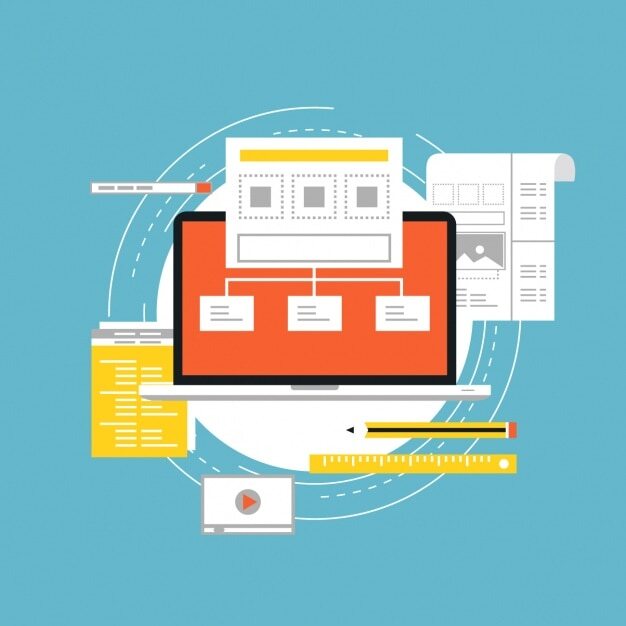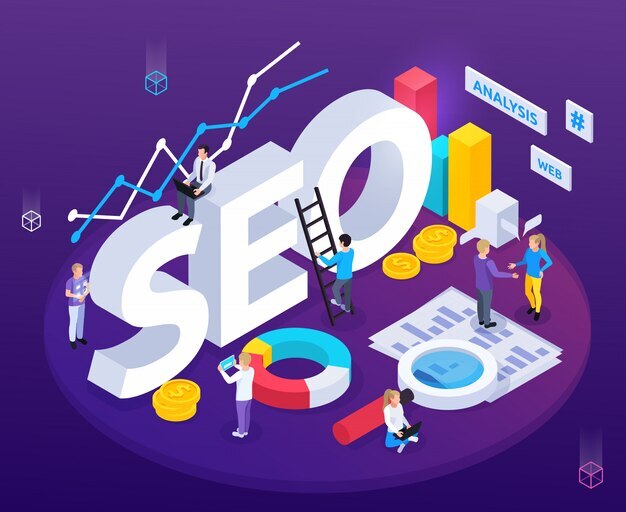In today’s digital landscape, search engine optimization (SEO) plays a crucial role in driving organic traffic and improving online visibility. As businesses increasingly adopt headless content management systems (CMS), understanding how to enhance SEO performance within this context becomes essential. A headless CMS decouples the content management and presentation layers, offering greater flexibility and scalability. However, it also introduces unique considerations for SEO optimization. This article aims to explore the relationship between headless CMS and SEO, providing valuable insights, tips, and best practices to enhance SEO performance in a headless CMS environment. By following these guidelines, you can leverage the benefits of a headless CMS while ensuring your website ranks high in search engine results and attracts organic traffic.
Introduction to Headless CMS and SEO Optimization
What is a Headless CMS?
So, you’ve heard the term “headless CMS” thrown around, but what does it actually mean? A headless CMS is a content management system that focuses solely on storing and delivering content, without concern for how that content will be presented. Unlike traditional CMS platforms, which include both a backend content management system and a frontend presentation layer, a headless CMS separates the two, allowing for greater flexibility in content delivery.
The Importance of SEO in Content Management
Search engine optimization (SEO) plays a crucial role in ensuring that your content gets the visibility it deserves. As search engines constantly evolve their algorithms, it’s essential to stay on top of SEO best practices to rank higher in search results. But how does a headless CMS contribute to SEO performance? Let’s dive into that in the next section.
Understanding the Relationship Between Headless CMS and SEO Performance
How Headless CMS Affects SEO
When it comes to SEO, a headless CMS can be a game-changer. By decoupling the frontend presentation layer from the backend content management system, a headless CMS allows for greater flexibility in delivering content across multiple channels and devices. This flexibility enables you to optimize your content specifically for SEO, without being limited by the constraints of a traditional CMS.
Key SEO Considerations for Headless CMS Implementation
Implementing a headless CMS involves some key considerations to ensure optimal SEO performance. One important factor is to ensure that your headless CMS supports custom URL structures, as this can greatly impact your site’s search engine rankings. Additionally, the ability to manage meta tags, including titles and descriptions, is crucial for optimizing your content for search engines.
Leveraging Structured Data and Schema Markup for Improved SEO

What is Structured Data and Schema Markup?
Structured data and schema markup provide search engines with additional information about your content, enabling them to better understand and categorize it. By using structured data and schema markup, you can enhance your SEO efforts and increase the likelihood of appearing in rich search results, such as featured snippets and knowledge graphs.
Benefits of Using Structured Data for SEO
Implementing structured data and schema markup can offer several benefits for your SEO strategy. It helps search engines understand the context and relevance of your content, leading to improved visibility in search results.
Implementing Schema Markup in a Headless CMS
Implementing schema markup in a headless CMS may require some technical know-how, but it’s worth the effort for the SEO benefits it brings. Look for a headless CMS that offers built-in support for schema markup or allows you to easily integrate schema.org vocabulary into your content. With the right tools and resources, you can leverage structured data and schema markup to boost your SEO performance.
Optimizing Content Delivery and Performance with a Headless CMS
Content Delivery Network (CDN) Integration
Speed is a crucial factor in SEO, as search engines prioritize fast-loading websites. With a headless CMS, you have the opportunity to integrate a content delivery network (CDN) to distribute your content across geographically diverse servers, reducing latency and improving page load times. By leveraging a CDN, you can enhance both user experience and SEO performance.
Implementing Lazy Loading and Image Optimization
Lazy loading is a technique where content, such as images, is loaded only when it’s needed, rather than all at once. This can significantly improve page loading times, especially for content-rich websites. Additionally, optimizing images by compressing them without sacrificing quality can further enhance your website’s performance. A headless CMS allows you to implement these optimizations easily, providing a speed boost to your site and improving SEO.
Minifying and Compressing Assets for Improved Performance
Minifying and compressing your website’s assets, such as HTML, CSS, and JavaScript files, can greatly reduce their file size and improve loading times. With a headless CMS, you have the flexibility to apply these optimizations without affecting the frontend presentation layer. By implementing minification and compression techniques, you can make your website leaner and faster, leading to improved SEO performance. So there you have it – some valuable tips and best practices for enhancing SEO performance with a headless CMS.
Best Practices for Effective Search Engine Indexing and Crawling
XML Sitemaps and Search Engine Submission
When it comes to getting your website indexed by search engines, XML sitemaps are your best friend. These handy files provide search engines with a roadmap of all the pages on your site, making it easier for them to crawl and index your content.
To maximize the effectiveness of your XML sitemap, make sure it includes all relevant pages on your site, prioritizes important pages, and is regularly updated. Once you have your sitemap ready, it’s time to submit it to search engines. Most search engines have a dedicated tool or section where you can submit your sitemap. Take advantage of these resources to ensure your website gets the attention it deserves.
Optimizing Robots.txt and Robots Meta Tags
Robots.txt and robots meta tags are like the bouncers at a trendy club – they decide who gets in and who gets left out. These tools allow you to control which parts of your website are accessible to search engine bots. By optimizing your robots.txt file and using robots meta tags strategically, you can guide search engines to focus on the most important areas of your site.
Make sure your robots.txt file is correctly configured to allow search engines to crawl and index your desired pages while blocking access to any sensitive or irrelevant content. Additionally, consider implementing robots meta tags on individual pages to provide specific instructions to search engine bots. This way, you can tell them which pages to index, which ones to skip, and more.
Handling Pagination and Infinite Scroll for Crawling
Pagination and infinite scroll can be great for user experience, but they can cause headaches for search engines trying to crawl your site. When search bots encounter infinite scroll or paginated content, they can struggle to find and index all the relevant pages.
To ensure your content is fully accessible to search engines, it’s important to implement proper pagination techniques. Consider using rel=”next” and rel=”prev” tags to indicate the sequence of pages, and use canonical tags to consolidate similar paginated content. If you have infinite scroll on your site, make sure to include a “load more” or “next” button to reveal additional content as search engines might not scroll down indefinitely.
Enhancing SEO Performance through Dynamic Meta Tags and URLs

Dynamic Meta Tags for Improved SEO
Meta tags are like the little snippets that introduce your website to the world. They appear in search engine results and provide a brief description of what users can expect to find on your page. With dynamic meta tags, you can customize these snippets for different pages and even for different users, resulting in improved SEO performance.
Take the time to craft appealing and informative meta tags that include relevant keywords and accurately represent your content. Consider using a headless CMS that allows you to dynamically generate meta tags based on page content, user preferences, or other criteria.
Implementing Dynamic URLs and URL Parameters
URLs are like the road signs that direct people to your website. They not only help users navigate, but they also play a role in search engine rankings. By implementing dynamic URLs and URL parameters, you can create user-friendly and SEO-friendly URLs that improve your website’s visibility.
Dynamic URLs allow you to create clean and descriptive URLs that include relevant keywords. They can also help with organizing and categorizing your content. Additionally, using URL parameters can enable personalized experiences for users, such as filtering search results or displaying specific content variations.
Make sure to structure your URLs in a logical and hierarchical manner, reflecting the organization of your site. Avoid using unnecessary parameters or overly long URLs, as they can negatively impact SEO. With dynamic URLs and URL parameters, you can optimize your website for both search engines and user experience.
Implementing SEO-friendly URL Structures and Canonicalization
Benefits of SEO-friendly URLs
SEO-friendly URLs are like having a secret password that search engines love. They not only make it easier for search engines to understand the content of your pages, but they also provide users with a clear indication of what they can expect.
When creating SEO-friendly URLs, focus on making them concise, descriptive, and keyword-rich. Avoid using excessive numbers or special characters, as they can confuse both search engines and users.
Canonicalization and Avoiding Duplicate Content
Duplicate content is like trying to buy the same concert ticket twice – it’s a waste of time and resources. Search engines don’t like duplicate content because it makes it difficult for them to determine which version should be ranked. That’s where canonicalization comes into play.
Canonicalization is the process of specifying the preferred version of a webpage when multiple versions exist. This helps consolidate link equity and prevents duplicate content issues.
Implementing canonical tags is especially crucial when using a headless CMS, as different URLs may serve the same content. Take the time to identify potential duplicate content and set up canonical tags to streamline your website’s SEO performance.
Measuring and Analyzing SEO Success with a Headless CMS
Setting Up SEO Analytics and Monitoring Tools
Measuring SEO success is like checking your weight after hitting the gym – it lets you know if your efforts are paying off. With a headless CMS, you can leverage various SEO analytics and monitoring tools to track your website’s performance and discover areas for improvement.
Set up tools like Google Analytics or other SEO monitoring platforms to gather data on key metrics such as organic traffic, keyword rankings, click-through rates, and more.
Analyzing Key SEO Metrics and Performance Indicators
Once you have your SEO analytics in place, it’s time to dive into the data and analyze key metrics and performance indicators. Look for trends, patterns, and areas of improvement that align with your SEO goals.
Pay attention to metrics like organic traffic growth, bounce rate, page load speed, and keyword rankings. By understanding these metrics and their relationship to your website’s SEO performance, you can make informed decisions on how to refine your strategies and enhance your website’s visibility in search engine results.
Remember, SEO optimization is an ongoing process, so continue monitoring and analyzing your SEO metrics to stay ahead of the competition and keep your website in top shape.
Conclusion
optimizing SEO performance with a headless CMS requires careful consideration and implementation of various strategies and best practices. By leveraging structured data, optimizing content delivery, ensuring effective search engine indexing, utilizing dynamic meta tags and URLs, implementing SEO-friendly URL structures, and measuring SEO success, you can maximize the potential of your headless CMS for achieving higher search engine rankings and driving organic traffic. As technology evolves and user expectations change, staying up to date with SEO trends and continuously refining your approach will be crucial for maintaining a competitive edge in the digital landscape.










